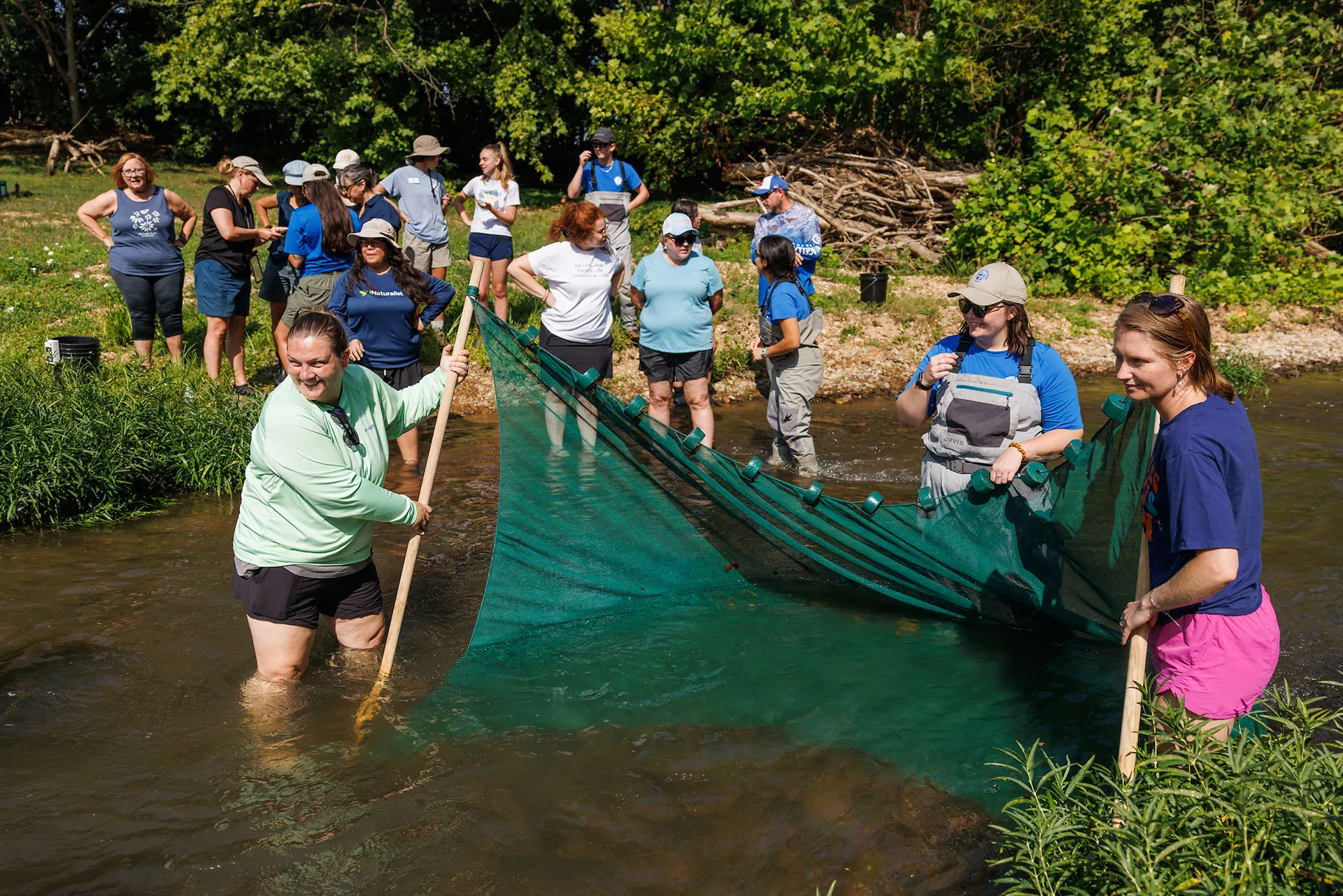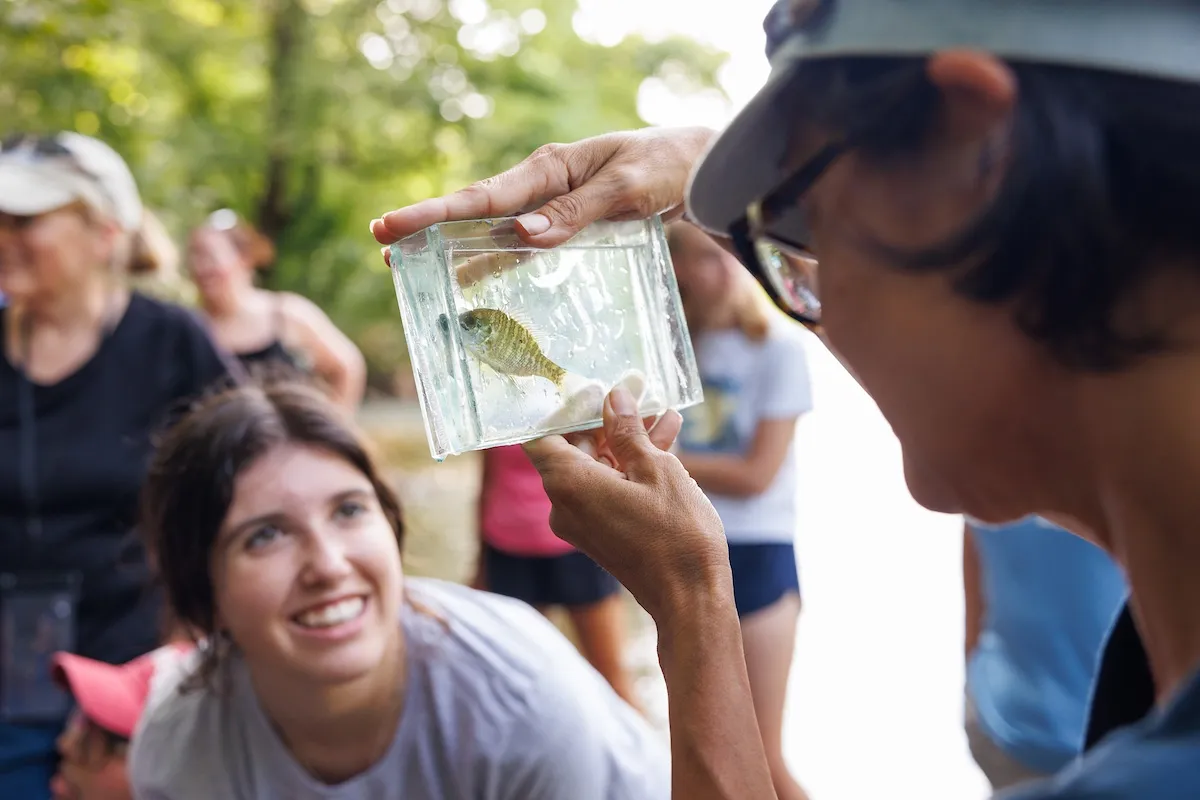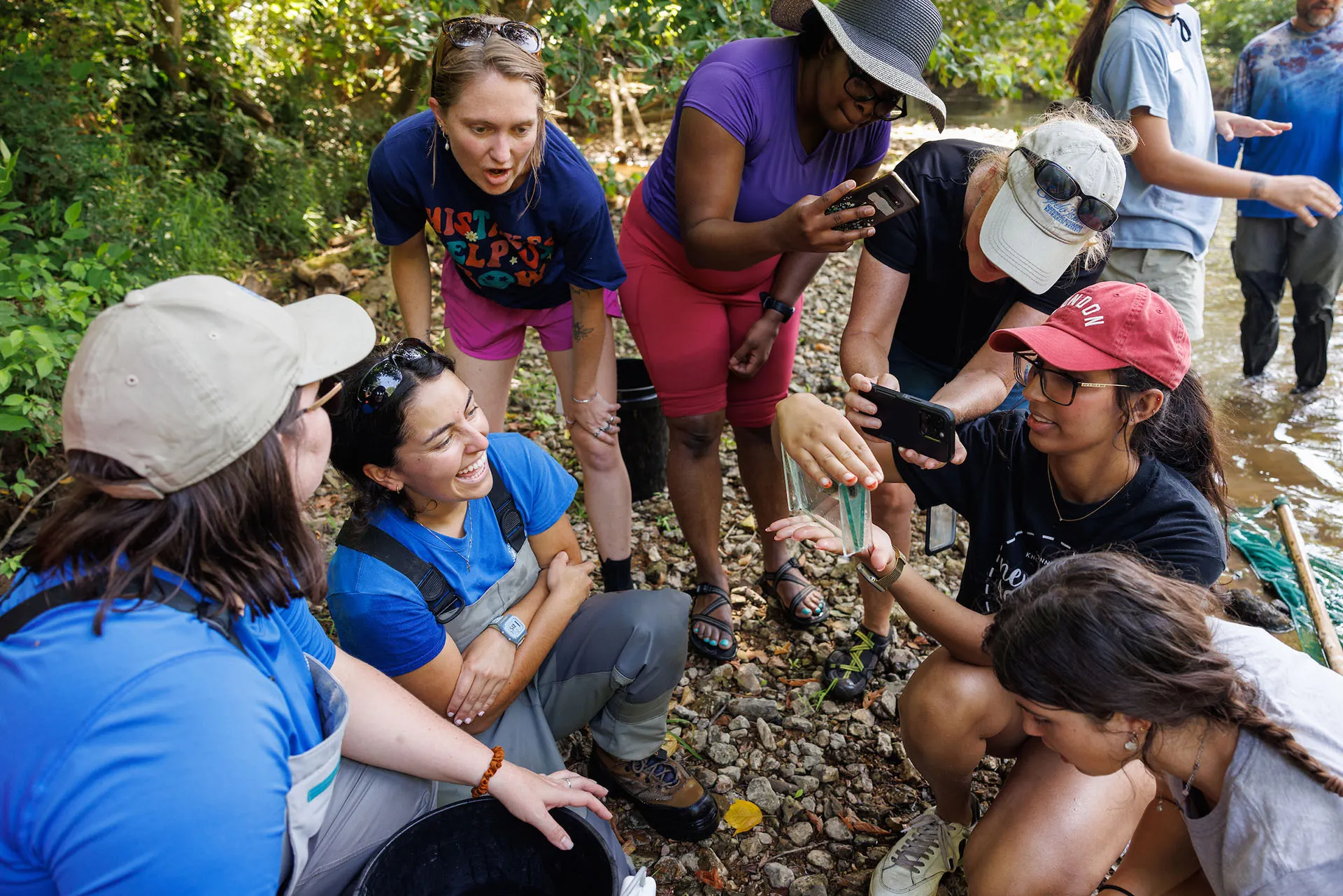After a multi-year hiatus, the Tennessee Aquarium’s professional development program River Teachers is once more helping regional educators feel more connected to the Southeast’s remarkable aquatic biodiversity.
“We’re really excited to have this year’s new cohort (of educators) here with us,” says Watershed Coordinator Helaina Gomez. “The goal of River Teachers is to get local teachers familiar with the freshwater biodiversity that we have here as well as the active conservation work that the Tennessee Aquarium participates in.”
During the three-day workshop, teachers and education professionals met with representatives from the Aquarium’s education team and the Tennessee Aquarium Conservation Institute to learn about animals living in our exhibits and nearby waterways. The program is so iconic that teachers from as far away as West Virginia traveled to Chattanooga to take part in this year’s seminar.
The workshop kicked off with an introductory day packed with a tour of the native wildlife-focused Ridges to Rivers gallery and various environmental sciences activities. The next day, the group traveled to South Chickamauga Creek to learn how conservation scientists collect fishes and invertebrates while conducting their research. The program concluded with a trip to the Tellico River on Thursday, where educators dipped their faces in a headwater stream of the Tennessee River to search for species like iconic Tangerine Darters and Saffron Shiners.


During their South Chickamauga Creek outing, the teachers grabbed seine nets, dip nets, and buckets before wading into the pleasantly cool water. There, they learned to perform highly sophisticated collection techniques like the “darter shuffle” — kicking feet along the substrate to herd bottom-dwelling darters into the net — while searching for as many native species as they could find.
South Chickamauga Creek is an ideal location for this introduction to fieldwork because it features many habitats and micro-habitats that harbor a wide variety of native species. Comprising pools, riffles and runs, everything from small darters and minnows to larger fishes like redhorse and bass can be found in abundance in this tributary of the Tennessee River.
Dragging seine nets through the water and splashing to drive fish into the net, the teachers erupted with excited shouts when each haul was lifted out of the stream. The fish they collected were deposited in five-gallon buckets. After a few hauls, the group gathered to hear Recovery Biologist Abbey Holsopple display the collected animals, explain each species’ role in the stream ecosystem and how to correctly identify it.
The fishes were then deposited in acrylic viewing aquariums, which the group passed around to photograph and to get a more up-close look.
“Today has been so cool,” says Erica Brown, a 6th-grade math and science teacher at Menlo School in Chattooga County, Georgia. “It’s great just being able to see things that you interact with all the time if you’re in this area but you have no idea are there.”


Brown lives just down the road from this stretch of Chickamauga Creek, yet she had never taken time to explore this life-filled aquatic ecosystem flowing so close to home. It didn’t help that she lacked the tools or knowledge to do so.
Programs like River Teachers are valuable, Brown says, because educators often don’t have the resources to pursue professional development opportunities on their own.
Gomez wants the teachers who participated in River Teachers to take what they learned back to their students and inspire them to protect the wild ecosystems around them.
“We want them to use some of this experience so that they can continue to raise the next generation of environmental stewards,” Gomez says.
Brown fully intends to do just that.
“I really want my students to understand how their daily lives impact the surrounding area,” Brown says. “What they do impacts the water sources not just right in their area. They are a part of a much larger ecosystem even if they never see the whole expanse of that ecosystem.”
